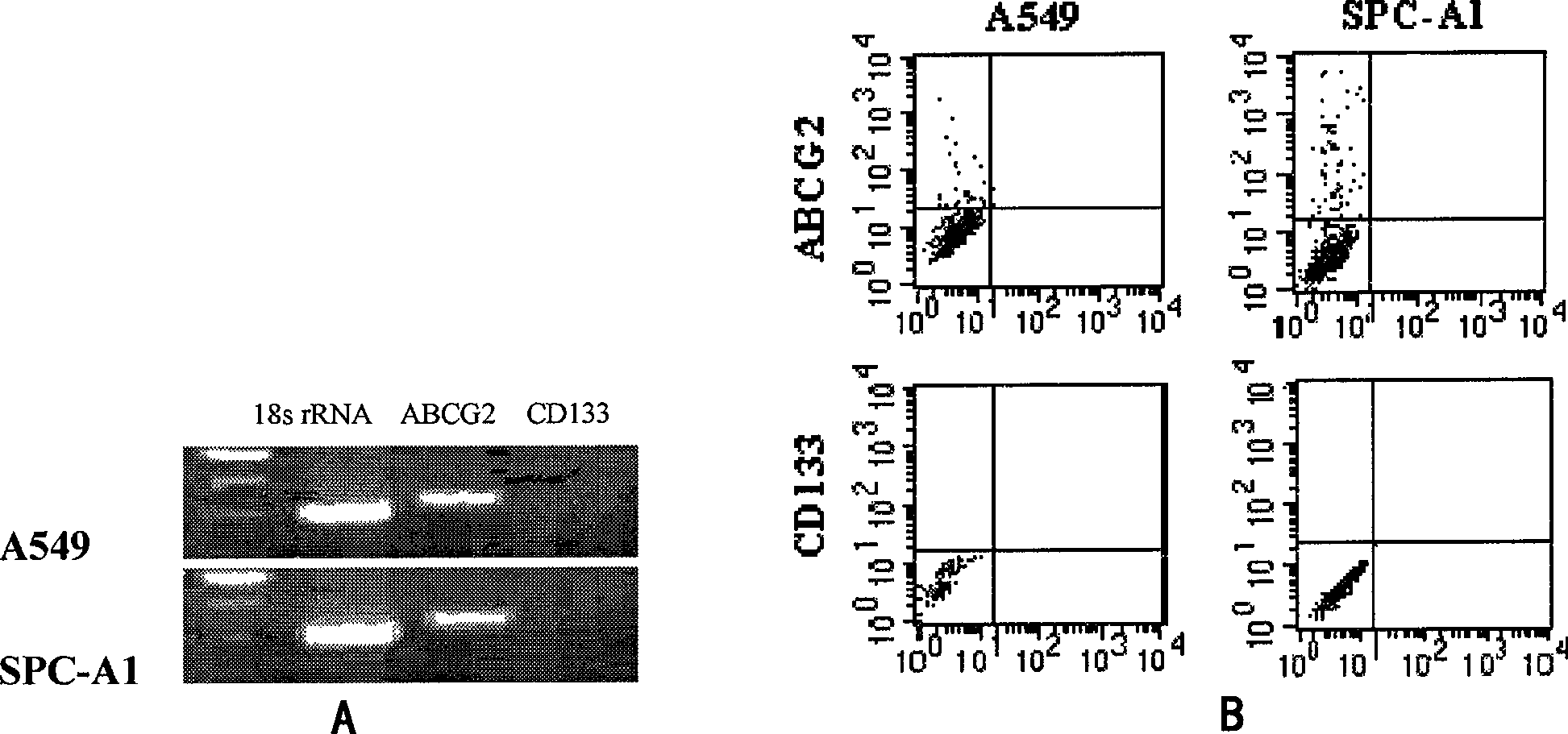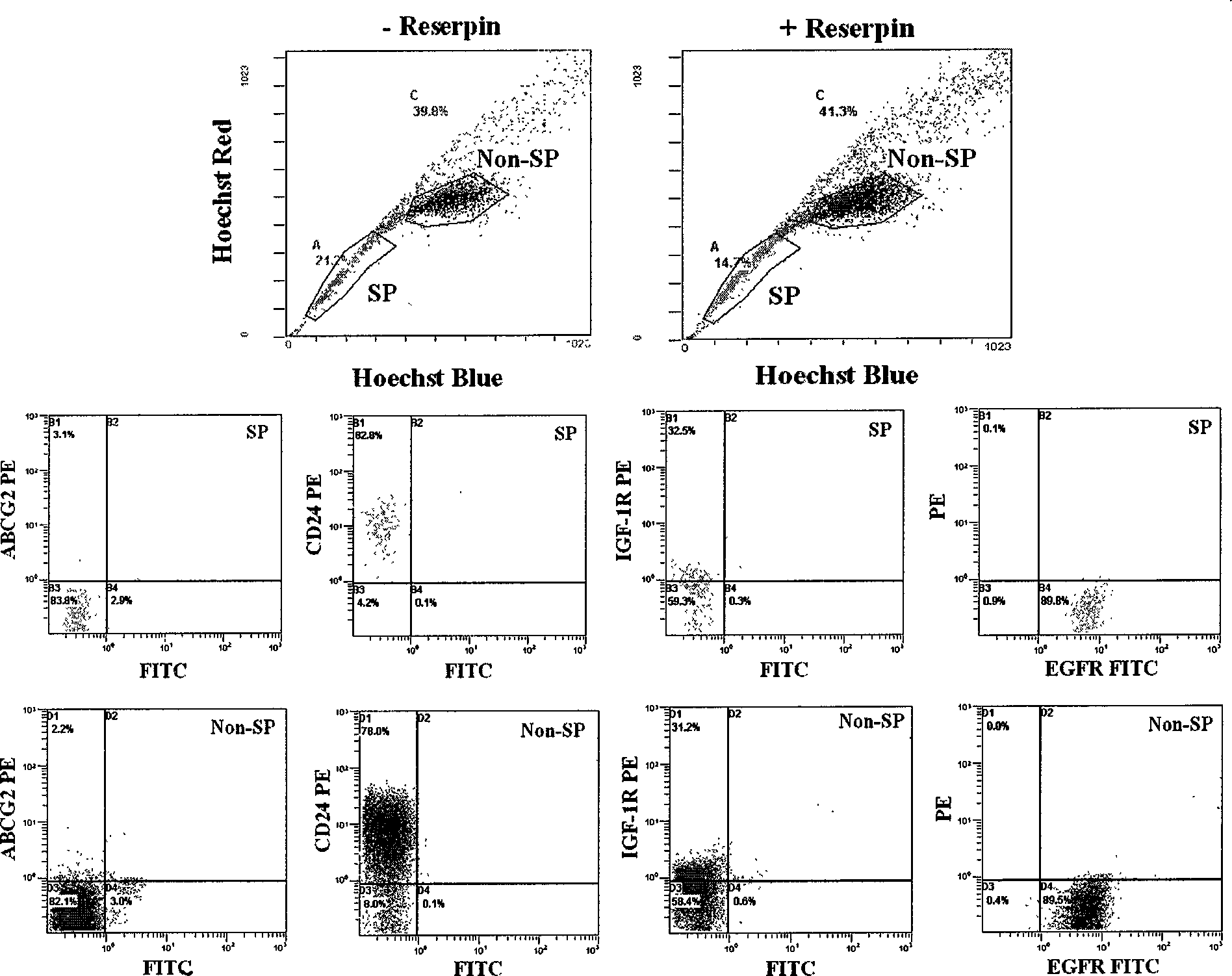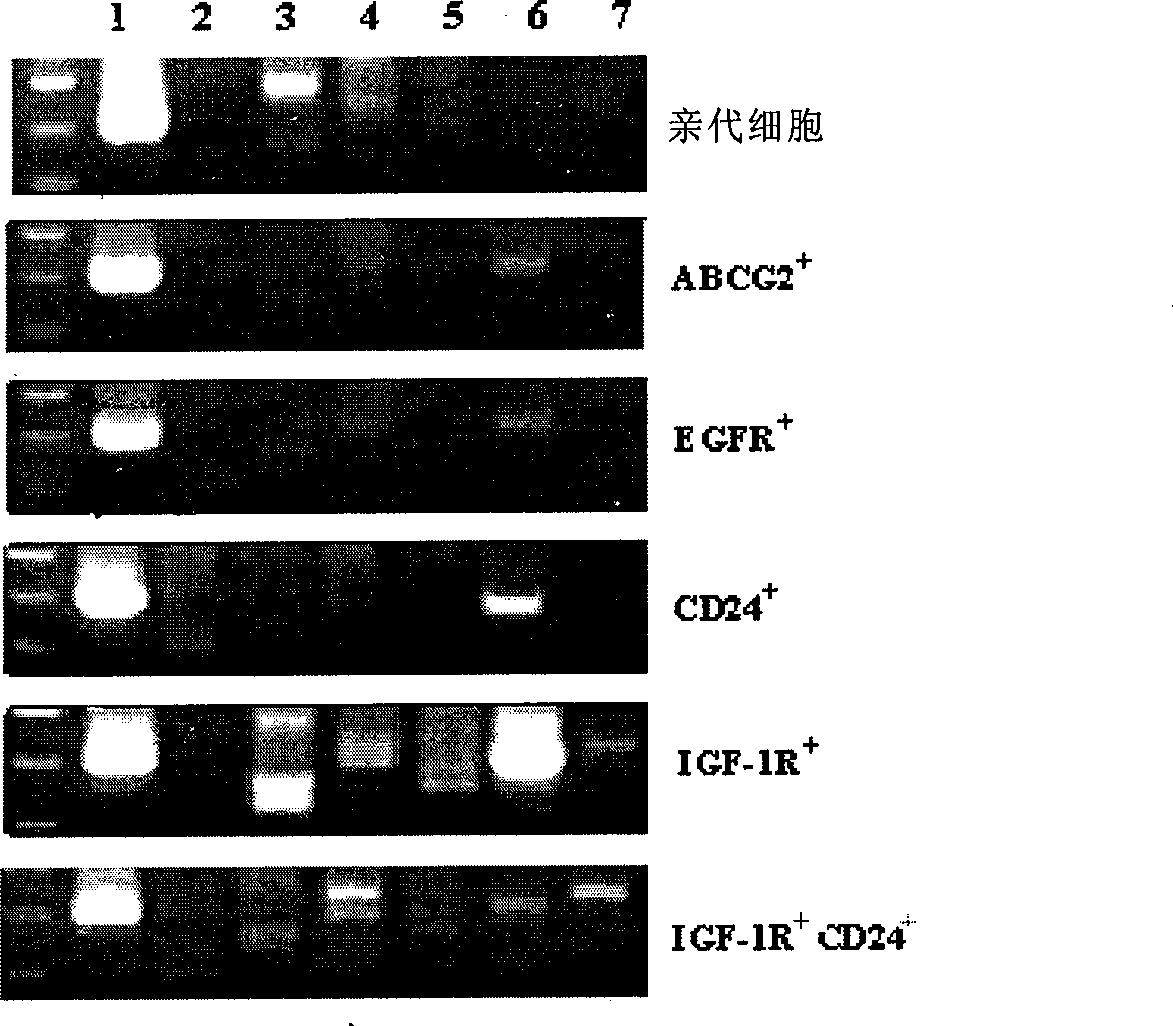Method for isolating and identifying human lung adenocarcinoma stem cell
A lung adenocarcinoma cell and stem cell technology, applied in the field of cell biology, can solve problems such as unclear origin of cells
- Summary
- Abstract
- Description
- Claims
- Application Information
AI Technical Summary
Problems solved by technology
Method used
Image
Examples
Embodiment 1
[0138] Example 1 Expression analysis of stem cell markers in lung adenocarcinoma cells
[0139] CD133 and ABCG2 are expressed on the surface of cancer stem cells of various solid tumors, and are a broad spectrum of stem cell markers. Therefore, the inventors detected the expression of CD133 and ABCG2 in A549 and SPC-A1 lung adenocarcinoma cells by RT-PCR and flow cytometry.
[0140] figure 1 A The results showed that both A549 and SPC-A1 cells expressed ABCG2-specific mRNA, but not CD133. Further detection of its protein expression by flow cytometry confirmed that ABCG2 in A549 and SPC-A1 cell populations + The proportion of cells was 6% and 10%, respectively, and no positive cells were detected by CD133 antibody staining, see figure 1 b.
Embodiment 2
[0141] Example 2 Relationship between the expression of ABCG2 and related markers and SP
[0142] ABCG2 in lung + The cells belong to the terminal airways (Distal airways) and alveolar epithelial cells. The former do not have SP characteristics, while the latter are lung stem cells with SP characteristics (Summer R et al., Sidepopulation cells and Bcrpl expression in lung[J].Am J Physiol Lung Cell Mol Physiol, 2003, 285(1): L97-L104). To identify ABCG2 in lung adenocarcinoma cells + The type of the cells, the inventors performed Hoechst staining and ABCG2 antibody labeling on the SPC-A1 cells.
[0143] figure 2 The results showed that SP cells in SPC-A1 ranged from 3.2 to 7.4%, with an average of 5%, and ABCG2 cells in SP and non-SP (non-SP) fractions + The cell ratios were 3.1% and 2.2%, respectively, that is, ABCG2 was mainly expressed on the surface of non-SP cells.
[0144] It is known that the expression of ABCG2 on the surface of cancer cells is regulated by growth...
Embodiment 3
[0146] Example 3 CD24 + IGF-1R + Stem cell gene expression analysis of cell subsets
[0147] In order to search for LASC in lung adenocarcinoma cells, the inventors used MACS technology to divide A549 cells into ABCG2 + , EGFR + , CD24 + and IGF-1R + Cell subpopulations, and then RT-PCR was used to detect the expression of a panel of stem cell genes involved in self-renewal (OCT4 and Bmi-1), differentiation regulation (TTF-1 and GRM), and BASC markers (CCSP and SP- C).
[0148] image 3 The results showed that unsorted A549 parental cells (Parent) expressed SP-C and Bmi-1, while all marker positive cells expressed Bmi-1, SP-C and Gremlin (GRM). In addition, CD24 + Cells also express OCT4, IGF-1R + Cells also express CCSP and TTF-1.
[0149] further from CD24 + Isolation of IGF-1R in Cell Subpopulations + cells, the resulting CD24 + IGF-1R + The expression of all stem cell genes, especially the simultaneous expression of CCSP and SP-C, suggested that these cells w...
PUM
 Login to View More
Login to View More Abstract
Description
Claims
Application Information
 Login to View More
Login to View More - R&D
- Intellectual Property
- Life Sciences
- Materials
- Tech Scout
- Unparalleled Data Quality
- Higher Quality Content
- 60% Fewer Hallucinations
Browse by: Latest US Patents, China's latest patents, Technical Efficacy Thesaurus, Application Domain, Technology Topic, Popular Technical Reports.
© 2025 PatSnap. All rights reserved.Legal|Privacy policy|Modern Slavery Act Transparency Statement|Sitemap|About US| Contact US: help@patsnap.com



